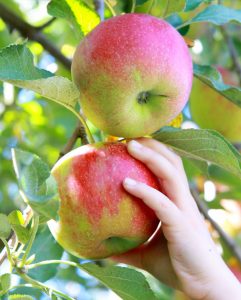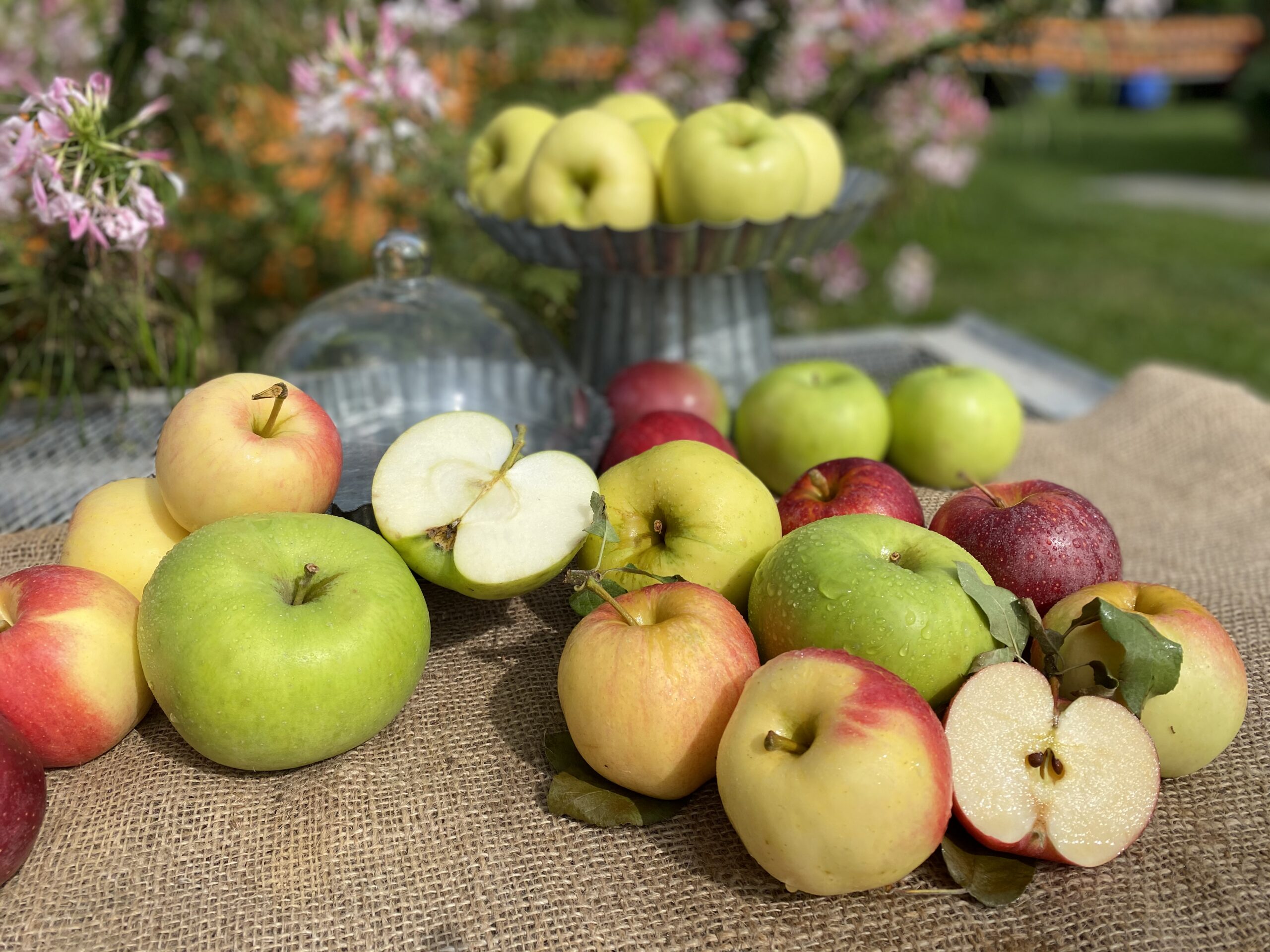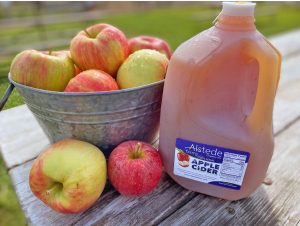Apples, very a-peeling to all
Apples, very a-peeling to all
When is it time to pick apples? Apples are in season from August through November here in the Northwest part of New Jersey. It’s time to pick apples by examining the fruit in the orchard, checking for size and color, and performing a field sample (tasting an apple). Our production team is expert at growing… Read More »

Apples are in season from August through November here in the Northwest part of New Jersey. It’s time to pick apples by examining the fruit in the orchard, checking for size and color, and performing a field sample (tasting an apple). Our production team is expert at growing apples knowing which varieties ripen first such as Lodi and Pristine. Our team will watch and know when apples are ripe by their typical seasonality along with sampling in the field. When they sample in the field they are looking at the flesh, the inside will lose its green tint and turn more white when ripe. Our team also looks at the inside seeds which will turn from white to dark brown when ripe. Another ripeness gauge is to give the apple a slight tug. If it easily can be removed from the tree you know it’s ready for eating. We request that you harvest apples or any other fruit or vegetable with care as unnecessary pulling or excess tugging can cause damage to the limbs. If you have to wrangle with the fruit to remove it from the tree then it most likely is not ready and won’t taste best. One helpful barometer is when you see apples lying on the ground near the tree which is an indicator that the fruit is ready for picking. Not to worry, our farm production stewards make things easy for you when you visit our farm. Simply utilize the map provided to you at admission or look for the “ready to pick” signs when in our fields.
Why is it important to know when an apple is ripe?
Our goal, as your farmer, is to provide you with the healthiest and best-tasting fruits and vegetables. We allow fruits to ripen naturally before picking them and grow of variety of different apples to ensure availability throughout the season. Unripe apples contain starch which is not so palatable. It won’t hurt you, however, you won’t be able to truly savor the apple’s flavor until those starches convert into sugar which occurs naturally when allowed to ripen on the tree.
Our team monitors the fields and updates the pick-your-own availability when fruit is ready. You can view the current pick your own availability update on our website by clicking here. Apple season is broken into three parts consisting of early-season, mid-season, and late-season apples. The category names mean just that, early season apples are the first apples to be available, typically in August and September, and they consist of Honeycrisp, Gingergold, Gala, Lodi, Mollie’s Delicious, and Paula Red. These apples are best eaten raw or soon after picking and don’t store well. Mid-season apples are typically available in September and October and include Macoun, Empire, Cortland, Jonamac, and Mutsu. Mid-season apples can be eaten raw or used for baking and will store well in an average fridge for at least a few weeks. Late-season apple varieties are typically available in October and November and include Granny Smith, Pink Lady, Fuji, Winesap, and Braeburn. Late-season apples are noted for their capability of being able to store for longer periods, especially in proper cold storage.
An Apple a Day Keeps the Doctor Away?
This English language proverb is said to have originated in Wales in the 1800s lending credence that consuming healthy foods aids in good health which may equate to fewer visits to the doctor. Apples are not only delicious they are nutritious and so versatile. Apples contain pectin and fiber which promote a healthy gut biome. Apples have been said to stabilize blood sugar, lower blood cholesterol, and help to satisfy hunger. Most beneficial eaten raw for their valuable nutrients, antioxidants, and hydration qualities. Apples are loved for their portability and that they can be eaten in so many ways both cooked and raw, sweet or savory creating endless possibilities to enjoy them. Some helpful hints to add more fruits, specifically apples, into your regular meals is grating them raw into salads, breads, muffins, and pancake batter to add sweetness and texture. You can also try cooking them to make sauces, fillings, jams, and preserves which can accompany meats, cheeses along with complimentary root vegetables. However you choose to eat apples, your meals will benefit from the added nutrition, crunch, and variety once introduced.
Where Can You Find Our Apples?
We farm 45 acres of apples growing nearly 50 different varieties, using the apples for our apple cider, for sale in our markets & farm stands, and CSA as well as for our farm-to-table catering on our farm. Our apples are also available in our vast pick-your-own fields where you will find the different varieties of apples (in season) growing using a trellis system. Our dwarf apple trees from rootstock provide easier access for apple pickers as they are shorter trees and produce more yield due to increased sun exposure. Our apples will start appearing in our farm store in late summer and will be available throughout the winter with the help of cold storage. Set a goal to sample as many apples this season to find your favorites!
Learn more about a visit to our farm for pick-your-own on our video with Kyle.








